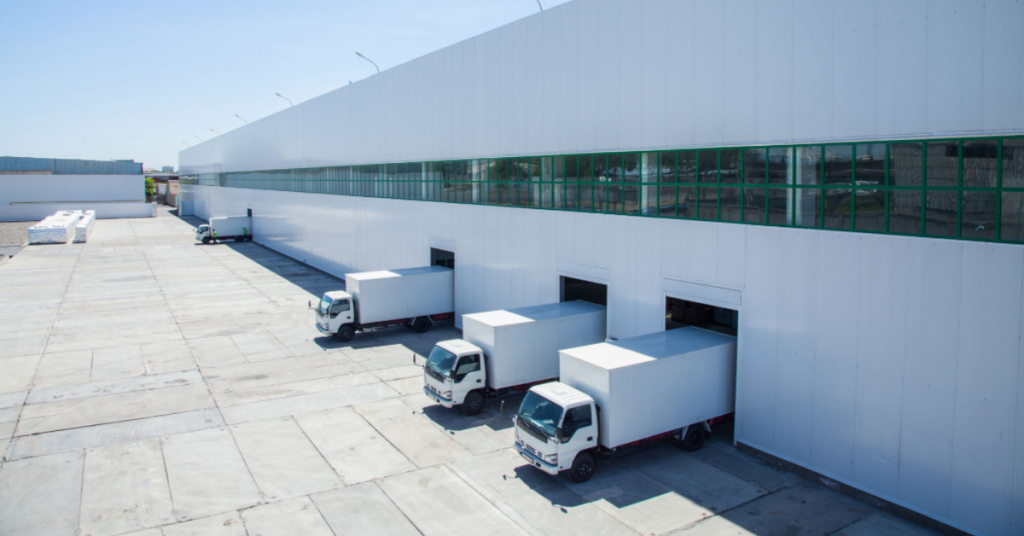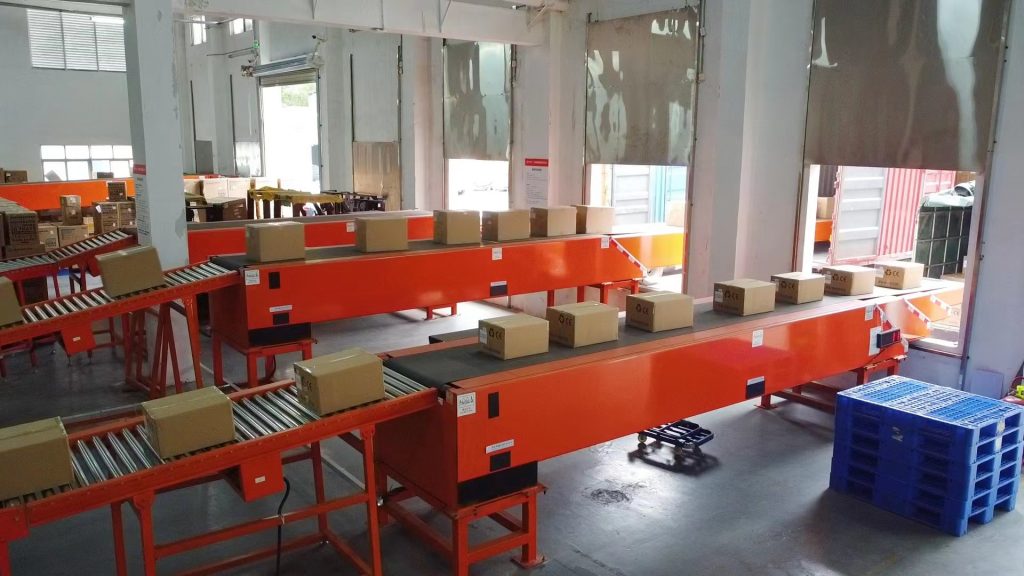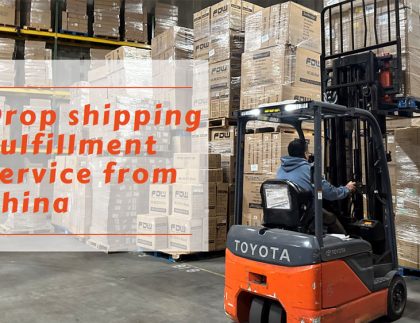Similarities & Differences Between Warehouse vs. Distribution Center
Do you know the differences and similarities between a warehouse vs distribution center? It’s time to find out.

For those worked in the field of logistics and order fulfillment, the terms distribution center and warehousing are likely to be familiar territory.
These operational hubs serve distinct purposes in ensuring businesses operate seamlessly and meet the expectations of their customers, especially in terms of efficient deliveries. However, despite their differences, these terms are often used interchangeably, even among industry experts.
To ensure your business delivers top-notch services to your customers through effective fulfillment, in this article, we will delve into the realm of distribution centers and warehousing within the context of e-Commerce, shedding light on their respective functions and highlighting the distinctions that set them apart.
Table of Contents
What’s a Distribution Center?
A distribution center is a specialized facility designed to efficiently manage the rapid movement of goods through the supply chain. Its primary focus is on order fulfillment, ensuring products reach their destinations quickly and accurately.
Distribution centers are strategically positioned near major markets and transportation hubs to reduce transit times and lower costs. Modern distribution centers are equipped with advanced technology that enables seamless integration with various sales channels, such as brick-and-mortar stores and online platforms.
Moreover, they excel in order consolidation, cross-channel integration, and effective returns management, making them the heartbeat of timely deliveries.
What’s a Warehouse?
A warehouse is a fundamental component of the supply chain that serves as a storage hub for products before they’re distributed to customers.
It plays a crucial role in inventory management, order processing, and quality control. Warehouses facilitate effective organization of goods, helping prevent overstocking and stockouts.
They provide the environment for thorough quality checks on incoming and outgoing products, ensuring customer satisfaction and brand reputation. Warehouses are versatile spaces that accommodate a variety of products, catering to different storage needs.
Differences & Similarities Between Warehouse vs. Distribution Center
Warehouses and distribution centers are both important components of the supply chain, but they serve slightly different purposes and have distinct characteristics. Here are the key differences and similarities between warehouses and distribution centers:
Differences
Function
Warehouse: Warehouses primarily focus on storing goods for extended periods. They are used to store excess inventory, raw materials, and finished products until they are needed. Warehouses often have a longer storage duration and are not as closely linked to order fulfillment.
Distribution Center: Distribution centers are more focused on efficiently managing the flow of goods in and out to quickly fulfill customer orders. They are optimized for order picking, sorting, packaging, and shipping. Distribution centers are strategically positioned to ensure timely and efficient delivery to customers.
Inventory Handling
Warehouse: Warehouses often deal with bulk storage and might have less concern for the precise organization of goods since items may remain in storage for a longer time.
Distribution Center: Distribution centers require meticulous organization and efficient handling of inventory to meet the demands of frequent order picking and shipping.
Order Processing
Warehouse: Warehouses typically do not prioritize rapid order fulfillment. They may not be equipped for high-speed order picking and packing.
Distribution Center: The main purpose of distribution centers is to quickly process and fulfill customer orders. They are designed for efficient order picking, packing, and shipping.
Location
Warehouse: Warehouses can be located in areas with lower real estate costs and may not necessarily be in close proximity to customer populations.
Distribution Center: Distribution centers are strategically located near major markets or customer clusters to reduce transportation costs and delivery times.
Layout and Design
Warehouse: Warehouses often have simpler layouts and fewer technological systems. They may not require advanced automation or conveyor systems.
Distribution Center: Distribution centers are designed for high efficiency and often incorporate automation, conveyor systems, and technology to streamline order processing.
Similarities
Storage
Both warehouses and distribution centers involve the storage of goods. However, the duration and purpose of storage differ. Warehouses store goods for a longer period, while distribution centers store goods temporarily to facilitate rapid order fulfillment.
Inventory Management
Both types of facilities manage inventory to ensure accurate record-keeping, track stock levels, and prevent stockouts or overstocking.
Logistics
Both warehouses and distribution centers are integral parts of the broader logistics and supply chain ecosystem, contributing to the efficient movement of goods from suppliers to customers.
Packaging
Both warehouses and distribution centers may be involved in packaging goods, whether for long-term storage or immediate shipment.
Warehousing and Distribution for e-Commerce Operations
Warehousing and distribution are critical aspects of e-Commerce operations. Efficient management of these functions is essential to ensure that products are stored, processed, and shipped accurately and quickly to customers. Here’s how warehousing and distribution work within the context of e-Commerce operations:
Warehousing for e-Commerce
Inventory Management
e-Commerce businesses need to maintain accurate and real-time inventory data to prevent stockouts and overstocking. Advanced inventory management systems help track stock levels and provide insights into demand patterns.
Multi-Channel Fulfillment
Many e-Commerce businesses sell through various channels, such as their website, online marketplaces, and brick-and-mortar stores. A centralized warehouse can enable seamless order fulfillment across these channels.
Order Picking and Packing
Efficient order picking and packing processes are crucial to ensure timely order fulfillment. Warehouses need to optimize layouts, organize products logically, and employ efficient picking methods to minimize errors and reduce processing times.
Returns Processing
e-Commerce operations often involve product returns. An effective returns process should be established to inspect, categorize, and process returned items efficiently, which can involve restocking, refurbishing, or disposing of items.
Technology Integration
Warehouses for e-Commerce should leverage technology such as barcode scanning, RFID (Radio Frequency Identification), and warehouse management systems (WMS) to streamline operations and maintain accuracy.
Distribution for e-Commerce
Last-Mile Delivery
The final leg of delivery to the customer is known as last-mile delivery. This is a critical aspect of eCommerce distribution as it directly impacts the customer experience. Businesses may partner with local couriers, delivery services, or even use their own fleet of vehicles for efficient last-mile delivery.
Fulfillment Centers
These are specialized distribution centers designed to process and ship eCommerce orders quickly. They are strategically located to reach customers within short timeframes, reducing shipping costs and delivery times.
Order Fulfillment Speed
E-Commerce customers often expect fast shipping and delivery. Distribution centers need to be optimized for quick order processing, picking, packing, and shipping to meet these expectations.
Same-Day and Next-Day Delivery
To compete in the e-Commerce landscape, some businesses offer same-day or next-day delivery options. This requires distribution centers to be highly efficient and strategically positioned.
Cross-Docking
In e-Commerce, cross-docking is sometimes used to minimize storage time. Incoming products are sorted and immediately transferred to outbound transportation, reducing the need for long-term storage.
Returns Logistics
Efficient management of returned items is crucial. Businesses need processes in place to inspect returned products, determine their disposition, and update inventory accurately.
Ready to Optimize Your Warehouse or Distribution Center?

As a leading 3PL provider, DIDADI Logistics brings its expertise to the forefront in optimizing warehousing and distribution center operations. We understand the unique needs of modern businesses and tailor our solutions to enhance your supply chain.
Whether you seek to streamline your warehousing processes or expedite distribution center operations, we offer advanced technology integration, customized solutions, and a commitment to operational excellence. Contact DIDADI Logistics today to embark on a journey towards enhanced logistics efficiency and customer satisfaction.
Previous Post: The Vital Role of 3PL in Streamlining Last-Mile Delivery
Start your ship now!
- Improve your cross-border shipping
- Decrease expenses
- Accelerate deliveries









